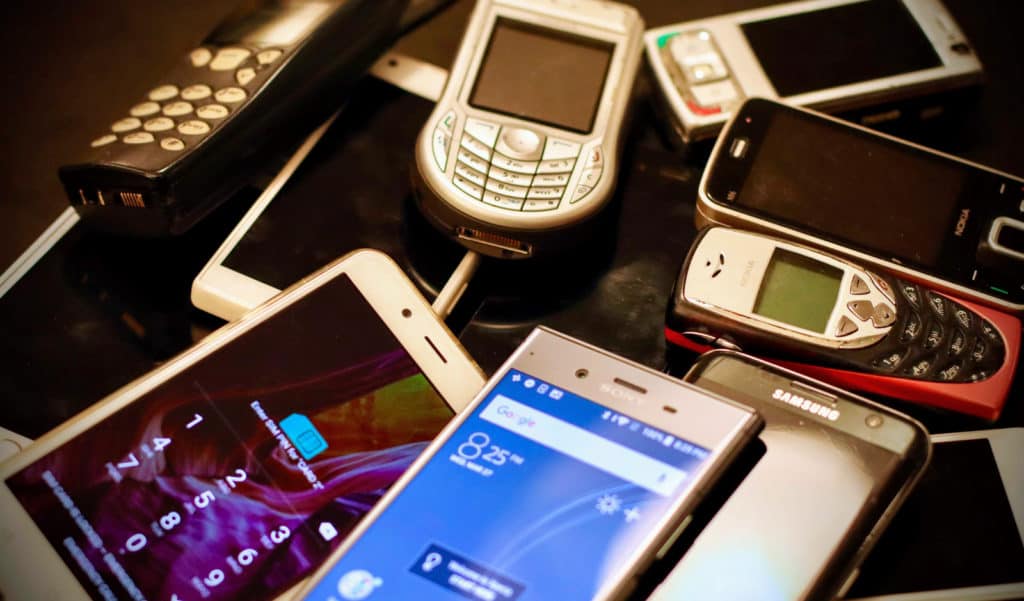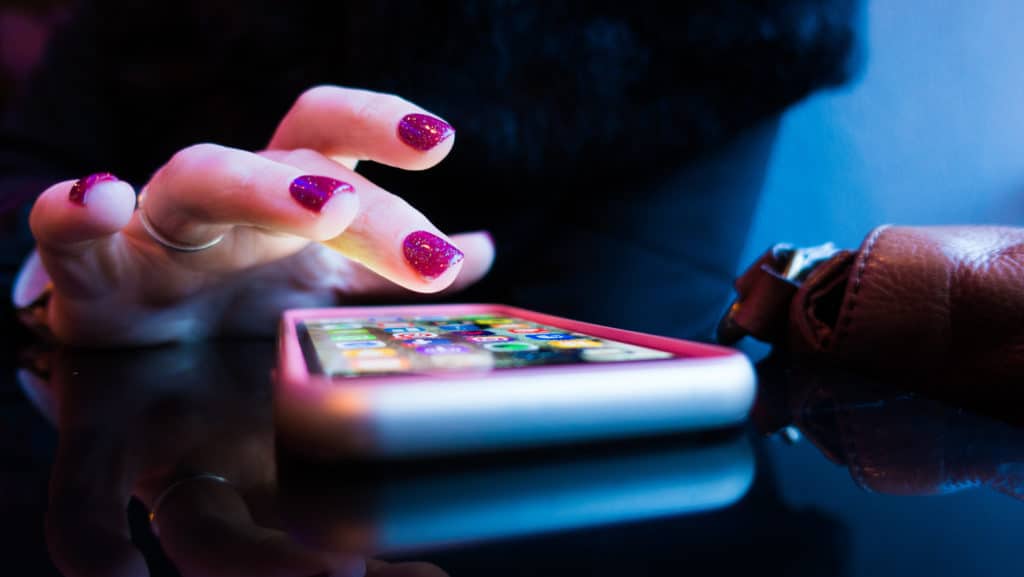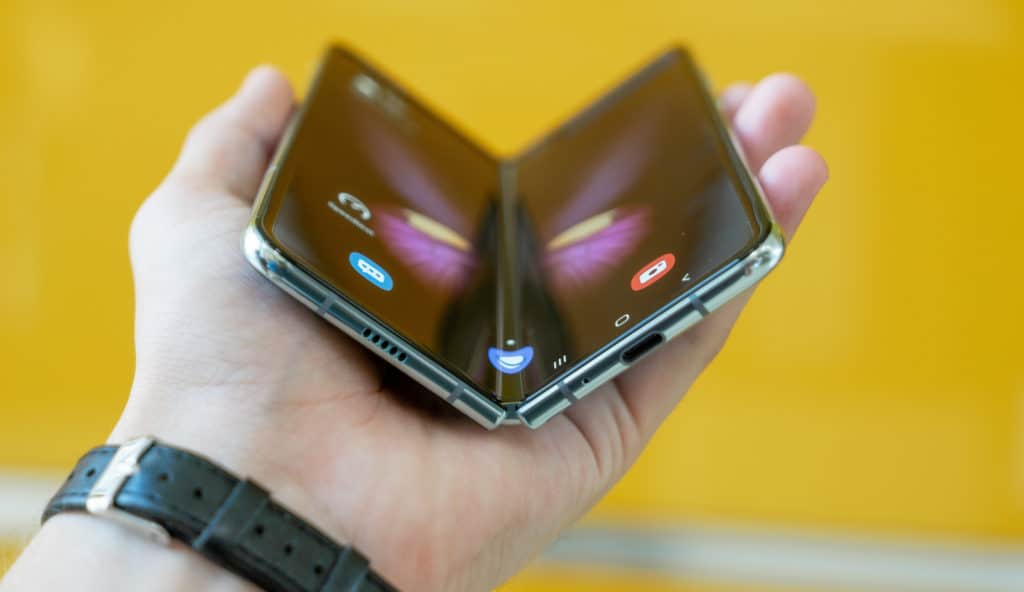It’s the smartphone season again. Just like every year, Apple has released the 2019 iPhone lineup, and Google is about to announce its new Pixel soon. Of course, we tech-loving people are always super excited about new products. But for this article of the story behind series, let’s take a step back and take a look at the big picture. What are smartphones used for the most? We’ll examine how smartphones have become a thing in the last 10 years, how they changed, and what people using phones actually do with them today. Finally, we explain how the business around smartphones is evolving and what the future might bring.
From Telephones with Additional Features to Mobile Computers with integrated phone
Phones with more advanced computing features beyond calling and texting have already existed since the mid-1990s. The Nokia 9000 Communicator, Sony Ericsson P900, or the early BlackBerry devices all examples for devices of that time going forward. They were bulky, rather expensive, and mainly used for business purposes due to the lack of multimedia features and their complicated user interfaces. But when Steve Jobs introduced the original iPhone in 2007, a new era began. Perhaps few people realized the impact that the first device was going to have in the next 10 years. Steve Ballmer of Microsoft gave the iPhone “no chance to get any significant market share”.
Furthermore, many tech bloggers and journalists on the other side were skeptical about the “low” specs and missing features. They criticized the lack of MMS, video recording, mass storage, custom ring tones. Also, the comparably inferior camera or phone quality didn’t exactly please the experts. But the real innovation of the iPhone wasn’t the technology itself but how neatly it was combined into an astonishing package of hardware and software. Apple didn’t try to create a telephone with some additional features, but rather a desktop-class mobile computer with built-in phone functionality. Steve Jobs had a clear vision of specific use cases for the phone and firmly focused on function and ease-of-use from the very beginning. This made the iPhone very popular, and the first smartphone actually used by the masses.
As we all know, the competition quickly intensified with Google entering the market and pushing Android as the new leading mobile OS for any smartphone. The ecosystem around phones became an increasingly important factor in the years to come leaving Apple and Google as the only relevant two players today.

Beautiful hardware meets capable software
Phones in 2019 have come a long way and are more mature than ever. The flagships feature slick edge-to-edge designs with huge, bright, and crisp OLED screens that can display amazing visual content. The processors have reached a level of performance that surpasses many laptops and gaming consoles, allowing computing-intense applications like games and augmented reality. These high performing chips paired with multiple camera lenses and advanced machine learning algorithms can produce photos in stunning quality that sometimes match the ones shot on DSLRs. New biometrical authentication methods like fingerprint readers and facial recognition systems have made the phones more secure than ever while still seamlessly usable. However, phones have reached a level of perfection where improvements have become increasingly incremental the past few years, and innovation has slowed down.
Software Ecosystems around the OS became more critical than the Phones
But not only the hardware has matured, so did the apps and the ecosystem around them. The first iPhone was designed with clear use cases in mind. It was a phone for calling and texting, an iPod to listen to music, and, most importantly, a pocked computer to access the internet conveniently on the go for the first time. Smartphones from the past have always failed at delivering a good user experience for internet access. Bundling the iPhone with a mobile data plan made the internet even more accessible mobile. In later versions of iOS and Android, the App Stores were introduced. They gave developers the freedom to create and sell custom apps and hence enabling countless new uses of mobile phones. There were 500 apps on the first iteration of Apple’s App Store in 2008 that set the foundation for the software ecosystems we know and use today. 10 years later, in 2018, Apple announced that there were 20 million registered iOS developers catering for the 500 million weekly visitors to the App Store alone. Apple’s restrictive approach, however, was controversial from the beginning. Not only did they just allow apps to be installed from their own App Store, but they also established strict design- and admission-guidelines. In addition to that, Apple has kept 30% of the revenue made through apps and in-app purchases ever since. However, these strict guidelines ensured a high quality of the apps and a consistent user experience. Due to that, iPhone users were ready to pay for apps and are still spending more on average than Android users today.
Nevertheless, despite efforts of Samsung with their Tizen OS and Microsoft with Windows Phone, only Google’s and Apple’s ecosystem survived. Maybe with Huawei being banned by the US government from properly pre-installing the Google services on Android, a new software ecosystem from China could arise. But experts are skeptical about that.

There’s an App for everything, but only 50% are frequently used
In Apple’s App Store or Google’s Play Store, there is an app for literally anything. Your local bank, favorite airline company, and probably even your supermarket all offer an app for Android and iOS. According to the market research company App Annie in most markets, the average smartphone user has 80 apps installed, uses roughly 40 apps per month, and spends three hours a day in apps. However, as in the early days, people still use their smartphones, mainly for calling and texting in 2019. Obviously enhanced with multimedia though: Video calls are standard, and luckily services like WhatsApp and iMessage are not restricted to 160-character text messages but support Photos and Emojis too. Consuming Social Media content on Facebook or Instagram is also an activity that people mainly do on phones.
Additionally, a majority of people likes taking photos, watching short videos, reading news, and playing games primarily on their phone, according to Deloitte’s global US mobile consumer survey of 2018. Interestingly, while accessing a bank account through a smartphone app is mainstream now, mobile payment still isn’t. Less than a third of consumers have ever used their smartphones to pay for goods and services. Obviously, browsing the web and purchasing online are additional major popular activities, but a majority of people also do it both on a laptop or a phone. Nevertheless, for most people in the world, their phone has become the primary way to access the internet and using apps. The time people spend on their phones is increasing and sometimes to an extent where addiction has become an issue. Just think about the last time you were riding the subway, sat in a coffee shop, or even attended a family gathering. What did you see? Right, people on their phones. We are certainly not moving away Phones any time soon.

Older models are still popular
While almost everybody extensively uses smartphones today, the market for new phones is actually cooling down. Because phones are not improving as fast and drastically anymore, people are holding on to their current devices longer than they used to. Nevertheless, according to Deloitte, still 80% of US consumers bought their current phone less than two years ago, but that number is decreasing as well. Interestingly though, many people buying a new phone are not getting the latest flagships. A 1-2-year-old model offered at considerably lower prices is what many people go for. In fact, all of the activities most people do on their phones still work on these older devices just fine. The popularity of models differs among countries. However, Apple’s older iPhone models like the 7, 6S, 6 or SE are well represented in the Top10 list of almost any country (even in emerging countries like Brazil, the Philippines or Nigeria). Apple usually updates its iPhones for at least three to four years, and Android-OEMs don’t. But surprisingly, Samsung is still selling many of its older flagship models like the S7 or S8 as well. But also, newly introduced devices are yet purchased frequently. For example, the late-2017 released iPhone X was the most sold phone in the year to come despite its $1000 price tag. Last year the iPhone XR was a huge success, and also, the Samsung Galaxy S9 and S10 sold well in Europe and the USA. In emerging countries of Asia like China, India, and Indonesia, the Redmi-Models from Xiaomi (especially the 4X) are most popular. But also the Galaxy J-Series of Samsung and mid-tier Huawei and Oppo devices are listed continuously at the top.
Business beyond the Smartphone
The smartphone market is saturated in 2019, so phone companies are trying to make money beyond just selling hardware. Apple and Google are in the comfortable position of owning the software ecosystem and hence can squeeze money out of every app including in-app purchases. Also, they can leverage their market share for selling online services like iCloud, Google Drive, or advertising space. In Apple’s case it’s not only services, but they are creating a “lock-in” that makes people buy other hardware from them too.
Chinese phone companies are changing from being sole hardware manufacturers too. Xiaomi is focused on selling online services but taking a different approach. Offering phones at a great value, they built a considerable consumer base they can sell online services to. Huawei was able to capture an impressive global market share even in European countries and selling smartphones that match the best in class. However, they are also one of the global leaders in cellular network equipment and are helping carriers worldwide building their 5G networks. That is a much higher margin business. Additionally, they produce their own smartphone CPUs and modem chips and are trying to establish a whole new smartphone ecosystem with their own Harmony OS.
Samsung and Sony, traditional producers of consumer electronics, went back to their roots and are focusing on building the superior parts they can sell to other manufacturers. In Samsung’s case that is displays, chips and storage, while Sony is the global leader in producing camera systems for smartphones. Samsung is still the dominant player in selling whole phones, while Sony has lost market share to competitors with their own Xperia lines. Other traditional smartphone manufacturers like LG, HTC, and Motorola are struggling and haven’t been able to keep significant market share lately.

The future folded away
Nobody knows what the next big thing is gonna be, but tech companies in Silicon Valley and other tech hotspots are trying hard on delivering it. 2019 has been the year of the first folding phones with Samsung spectacularly failing with their first device and proving that folding phones are not for the masses yet. In the meantime, people will continue using their mature phones, big companies will keep selling them, and the next “big thing” might eventually replace them.
Thank you so much for reading. Please let us know in the comments what you have liked most in this article and what topics you’d like to read more in-depth about in the future.

Contents